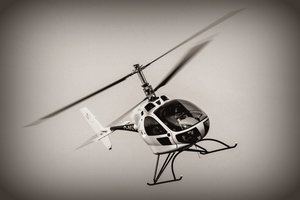Fundamentals of Helicopter Aerodynamics
The language of instruction is English.

This course deals with aerodynamic analysis of rotors, or rotary-wings, encountered on helicopters and most eVTOL designs. It focuses on laying the theoretical groundwork for more advanced computational analyses of rotorcraft aerodynamics that one might want to pursue as part of a thesis or a project. We’ll strive to cover the fundamentals of rotary-wing aerodynamics with the goal of eventually studying some of the state-of-the-art research questions being investigated in this area. The knowledge from the course will endow students with theoretical and, to a limited extent, computational tools to qualitatively and quantitatively study rotors on helicopters or eVTOLs of any configuration.
Prerequisite:
Students should be familiar with fundamental concepts of fluid dynamics/aerodynamics. Specifically, fundamental fluid analysis constructs like vorticity, compressibility, line vortices, pressure gradient etc. will come up often and will be explained only briefly but used extensively during the course.
Course notes from last course offering SS2023 are available here
Course content:
- Hovering theory: Momentum Theory (principles, flow model, assumptions)
- Hovering and vertical flight performance (FM, DL, PL, induced velocity curves, rotor working states, etc.)
- Factors affecting hovering and vertical flight performance
- Momentum theory in forward flight (Glauert)
- Blade element theory and blade element momentum theory
- Blade twist, taper, rotor solidity, etc., and their effects on rotor performance
- Concepts of blade motion and control
- Forward flight performance: induced, profile, parasitic power, drag synthesis, theoretically derived and semi-empirical equations describing power requirements
- Operational envelope: range and endurance, factors affecting max. speed, etc.
- Rotor limits: compressibility effects (drag divergence Mach number, etc.), retreating blade stall, reverse flow
- Autorotational performance: quantification, height-velocity diagram, etc.
- Unsteady airfoil aerodynamics: theories from Theodorsen, Greenberg and Loewy
- Coaxial rotors and active rotors: an aerodynamics perspective into state-of-the-art rotor designs
- Special topics: Dynamic stall, blade-vortex interaction (BVI), comprehensive rotorcraft analysis.
Instructor
Sumeet Kumar, M.Tech.